'Climate scientist fears murder by hitman'While Wadhman's claims may seem outlandish, it's not beyond the realm of possibility that scientists working in certain areas might be discretely bumped off. Post 9/11, a flurry of microbiologists died in mysterious circumstances. More recently, a pattern has emerged of holistic medical doctors and practitioners meeting untimely demises.
By Ben Webster, The Times, July 25th, 2015[Wadhams] said that assassins may have murdered scientists who were seeking to reveal how rapidly global warming was melting Arctic ice... [and] believed that he had also been targeted but had a narrow escape after a driver of an unmarked lorry tried to push his car off the M25.
Professor Wadhams faced criticism this week after a study contradicted his prediction that Arctic ice was melting so fast that it could all disappear this summer. Asked by The Times for his response to the discovery that the total volume of ice grew 40 per cent in 2013, Professor Wadhams insisted that there was still an outside possibility of the Arctic being ice-free this year [in 2015 - NB].He then said there were only four people in Britain who were "really leaders on ice thickness in the Arctic" and he was one. The others, he said, had died in early 2013.Top left: Peter Wadhams. Top right: Seymour Laxon. Bottom left: Katharine Giles. Bottom right: Tim Boyd.
He said: "It seems to me to be too bizarre to be accidental but each individual incident looks accidental, which may mean it's been made to look accidental."
He named the three as Seymour Laxon of University College London, Katharine Giles, a climate change scientist who worked with Professor Laxon at UCL, and Tim Boyd of the Scottish Association for Marine Science.
Professor Laxon died after falling downstairs at a New Year's Eve party in Essex; Dr Giles died in a collision with a lorry while cycling to work in London; and police said they believed that Dr Boyd was killed by lightning as he walked near a loch in Scotland.
Professor Wadhams said that about the same time he was driving on the M25 late at night when the lorry hit his car. "This guy showed definite evidence of malevolence. He was trying to run me right off the road." He said his car was damaged but he managed to get home and called the police the next day. He was told no action could be taken.
"I just thought 'what is going on here?' Somebody is trying to do in people who are working on ice thickness in Britain."
He said: "If it was some kind of death squad, you don't expect that with something like climate change. I know oil companies have been giving lots and lots of money to... climate change denialist organisations but you don't expect them to kill people."
In the case of the microbiologists, it's either known, or considered very likely, that their research connected into high-level military/government projects and sensitive research areas. It's less clear-cut how natural health practitioners could present such a threat to the Powers that Be that they merit 'termination'. While a string of suspicious deaths of researchers in particular fields is not necessarily evidence of a conspiracy or cover-up, it's also true that powerful interests may wish to, at any time and in any field, snuff out apparently innocuous research. Science can indeed be dangerous work.
The problem with Wadham's claim however is that the research he and his former colleagues were engaged in supports the dominant man-made global warming theory. 'Warmists' are a godsend to those in power because it deflects blame for increasing climate chaos from powerful and extremely wasteful institutions like central banking and the US military onto the masses of ordinary people.
Politically incorrect science
But still, Wadham has a point: the odds of three out of four of Britain's top researchers in one specific field dying in unrelated incidents over a relatively short time are rather large. If we run with Wadhams' suggestion for a second and assume that his colleagues were killed in such a way as to make their deaths appear accidental, then that would suggest they were killed by high-level military-intelligence operatives. Only such types would have the clout to pull off the deeds, manage the crime-scenes, influence the investigations and vector media coverage.
As to motive, what if these apparent 'warmists' research was leading them to conclusions that posed a serious challenge to the official narrative? I imagine that hard evidence supporting the case for sudden glacial rebound would be high on the criminal elite's blacklist. The Powers That Be want people alarmed, but in a controlled manner, and by a false narrative that blocks awareness that something big is happening on a global scale - now, not in some distant future.
Speaking publicly about such civilization-ending scenarios won't necessarily bring danger on anyone's head. It's no secret that a number of scientists from all over the world are leaning towards some form of ice age scenario. But what counts is the standing of the person saying it. Even if they only say certain things to their peers in private, the Powers That Be are ever-alert to 'sedition' within the lower ranks.
When Dr. David Kelly knew for a fact that British government claims about Iraq's WMDs in the run-up to the Iraq War were false, he didn't stay silent. He was an expert in that very field and could prove what the Iraqi military did and did not have in its arsenals. British security operatives forced the journalist who anonymously cited Kelly's expertise to publicly reveal Kelly's name, at which point they discredited Kelly in trial-by-media, then physically 'suicided' him. The reason they went to such lengths was because of Dr. Kelly's public standing and specific knowledge which made him unlikely to give in to intimidation.
Wadhams features regularly in media coverage of Arctic climate developments, where he has consistently promoted his view that an 'ice-free Arctic' is almost a certainty by 2020, and on its heels comes a 'big chill'. As such, he is the most high-profile name of these four climate scientists, and also the one to make the most hard-and-fast claims, like this from 10 years ago:
'Britain Faces Big Chill as Ocean Current Slows'So here we have a prominent climate scientist 'believer' (as opposed to a 'denier') riding the 'man-made global warming wave', like most others, but towards an altogether different conclusion: abrupt and imminent glacial rebound, i.e. a new ice age of one sort or another.
By Jonathan Leake, Sunday Times (UK), May 8th, 2005Climate change researchers have detected the first signs of a slowdown in the Gulf Stream - the mighty ocean current that keeps Britain and Europe from freezing.
They have found that one of the "engines" driving the Gulf Stream - the sinking of supercooled water in the Greenland Sea - has weakened to less than a quarter of its former strength.
The weakening, apparently caused by global warming, could herald big changes in the current over the next few years or decades.
Paradoxically, it could lead to Britain and northwestern and Europe undergoing a sharp drop in temperatures.
Peter Wadhams, professor of ocean physics at Cambridge University, hitched rides under the Arctic ice cap in Royal Navy submarines and used ships to take measurements across the Greenland Sea.
"Until recently we would find giant 'chimneys' in the sea where columns of cold, dense water were sinking from the surface to the seabed 3,000 metres below, but now they have almost disappeared," he said.
"As the water sank it was replaced by warm water flowing in from the south, which kept the circulation going. If that mechanism is slowing, it will mean less heat reaching Europe."
Such a change could have a severe impact on Britain, which lies on the same latitude as Siberia and ought to be much colder. The Gulf Stream transports 27,000 times more heat to British shores than all the nation's power supplies could provide, warming Britain by 5-8C.
Wadhams and his colleagues believe, however, that just such changes could be well under way. They predict that the slowing of the Gulf Stream is likely to be accompanied by other effects, such as the complete summer melting of the Arctic ice cap by as early as 2020...
Wadhams suggests the effect could be dramatic. "One of the frightening things in the film The Day After Tomorrow showed how the circulation in the Atlantic Ocean is upset because the sinking of cold water in the north Atlantic suddenly stops," he said. "The sinking is stopping, albeit much more slowly than in the film - over years rather than a few days. If it continues, the effect will be to cool the climate of northern Europe."
With the exception of occasional reports of alternative climate research, the overwhelming media consensus is in line with the position of the UN International Panel on Climate Change (IPCC): the climate system is definitely warming, human activity is definitely to blame, and if measures aren't taken to address it right now, coastal regions will be under water... perhaps a century from now.
Three dead climate scientists
Tim Boyd was a 54-year-old, US-born climate scientist who worked at the Scottish Association of Marine Science (SAMS) in Oban, western Scotland, where his title was Principal Investigator in Polar Physical Oceanography, and his specific research interests included "variability in the heat and salt content of the upper layers of the Arctic Ocean."
A passer-by found Boyd dead on a bridge near his home in Port Appin on January 27th, 2013. Local police said they 'believed' Boyd was struck dead by lightning, citing a storm that had passed through the area and knocked down power and phone lines. A postmortem was apparently conducted, although its results have not been made public.
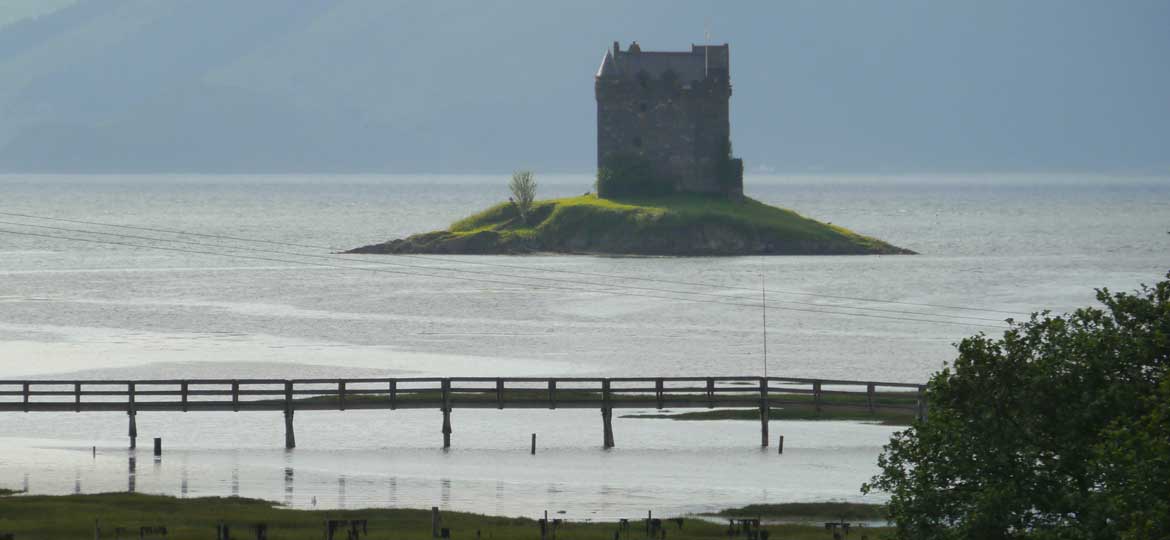
Seymour Laxon was 49 years old when he died on January 2nd, 2013, after suffering a brain hemorrhage and falling down a flight of stairs (it's unclear in which order) at a New Year's Eve party in Essex, England. In this Guardian obituary we learn that:
Seymour's scientific breakthrough was to distinguish the ice surface from the water surface in satellite radar altimeter measurements of ice-covered oceans. This led to the first detailed map of the Arctic gravity field, revealing new tectonic features beneath the seafloor, and water circulation beneath the ice. His work helped give the European Space Agency the confidence to build CryoSat, a satellite dedicated to observing the Earth's ice-covered regions, launched in 2010.Then there is Katharine Giles, originally a PhD student of Laxon's, and at the time of her death a lecturer and colleague of his at the Centre for Polar Observation and Modelling at University College London. Giles's major scientific contribution was to build on Laxon's work supporting the discovery of an enormous quantity of recently accumulated freshwater in the Arctic Ocean, demonstrating that it is being held back from entering the North Atlantic (and thus from disrupting the Gulf Stream) by a rather temperamental force: wind...
Seymour taught at University College London's Department of Space and Climate Physics, before moving to the Department of Earth Sciences, where he was director of the Centre for Polar Observation and Modelling. He was awarded his Chair in Climate Physics in 2012.
'Huge pool of Arctic fresh water could cool Europe'Giles was killed on April 8th, 2013, while cycling to work through central London. The report of an inquest into her death was made public: the driver of a large truck had failed to notice her 'coming up his near side' as he made a left-hand turn. Another cyclist behind Giles witnessed her bicycle being hit. One small thing that stood out about her death was that she was killed at a location that wasn't on her normal commute. None of her colleagues could say why she might have been on Victoria Street, a location that at least tripled the distance of her normal cycle route.
By Tamera Jones, phys.org, January 23rd, 2012British scientists have discovered an enormous dome of fresh water in the western Arctic Ocean. They think it may result from strong Arctic winds accelerating a great clockwise ocean circulation called the Beaufort Gyre, causing the sea surface to bulge upwards.
The researchers made their discovery using European Space Agency (ESA) satellites ERS-2 and Envisat. They measured sea-surface height over the western Arctic over a 15-year period, from 1995 to 2010.
Using these measurements, they calculate that since 2002 the sea surface in the western Arctic has risen by around 15cm, and the volume of fresh water has swollen by roughly 8000 cubic kilometres. This is around ten per cent of all the fresh water in the Arctic Ocean.
If the wind changes direction, as happened between the mid-1980s and mid-1990s, the water could spill out into the rest of the Arctic and then perhaps even the north Atlantic. This could cool Europe by slowing down a key ocean current derived from the Gulf Stream, which keeps the continent relatively mild compared with countries at similar latitudes.
The Gulf Stream forms part of a larger movement of water called the ocean conveyor belt, which is itself one component of the global system of ocean currents.
"Satellite data has shown us that a dome of fresh water has been building up in the western Arctic over the past 15 years, due to the wind. Our findings suggest that a reversal of the wind could result in the release of this fresh water to the rest of the Arctic Ocean and even beyond," says Dr. Katharine Giles from the Centre for Polar Observation and Modelling (CPOM) at University College London, lead author of the study, published in Nature Geoscience.
To these three we must add the sudden death of British climate researcher Christopher Bell, 24 years old, a PhD student who worked at SAMS under Tim Boyd. Bell was reported killed, along with three others, by an avalanche at the Scottish ski resort of Glencoe on January 19th, 2013 just 8 days before Boyd.
Leaving aside speculation, let's look at the sequence:
Jan. 2nd 2013 - Dr. Seymour Laxon, used satellites to observe polar ice caps and sea ice. Died from brain haemorrage.
Jan. 19th 2013 - Christopher Bell, PhD student working under Dr. Tim Boyd. Killed in avalanche
Jan. 27th 2013 - Dr. Tim Boyd, Arctic ocean ice cover, heat and salinity researcher. Killed by "lightning strike"
Apr. 8th 2013 - Katharine Giles, colleague of Dr. Seymour Laxon. Killed by truck while cycling unusual route to work.
What are the odds?
Arctic research and ice ages
Wadhams's assertion that Boyd, Laxon and Giles were the best in their particular field does appear to hold up. In a speech shortly after Giles's death, Duncan Wingham, a colleague of both her and Laxon said:
"I said we have to look to the younger generation to carry on his work. Katharine was one of the people I had in mind. Science is not just about talent, leadership is essential and she had both. We've lost around 40 years of accumulated experience in Seymour and Katharine. That group of scientists were the only people capable of doing the work with satellites they had been doing. That huge investment of time and human effort can't be replaced."
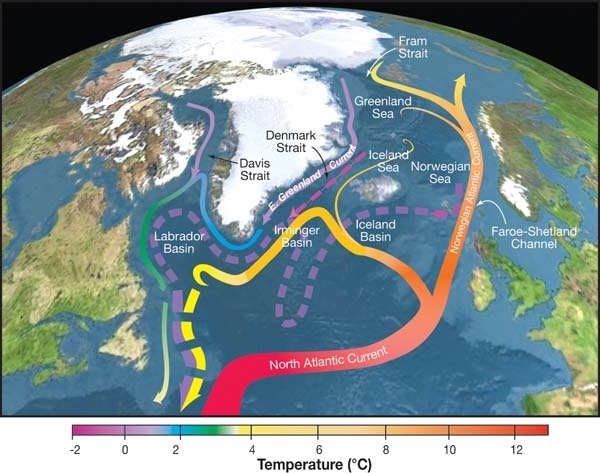
Remember those British scientists in The Day After Tomorrow, who sounded the alarm about readings of temperature drops relayed by their buoys in the North Atlantic? The three dead scientists (plus Wadhams) were the real life versions of those characters. There are, of course, others in the UK and elsewhere working in this specific field, and the same warning message is coming through in all of their research - though couched in 'man-made global warming terms', and minus any Hollywood drama. For one recent example:
'Deterioration of perennial sea ice in the Beaufort Gyre from 2003 to 2012 and its impact on the oceanic freshwater cycle'Whether any or all of these scientists ever fully realize it or not, they have caught a tiger by the tail. They are shy to spell out what that means, but they all understand the implications: severe cooling in the northern hemisphere in the very short term.
R. A. Krishfield, A. Proshutinsky, K. Tateyama, W. J. Williams, E. C. Carmack, F. A. McLaughlin, and M.-L. Timmermans
Journal of Geophysical Research: Oceans, 22 February 2014, DOI: 10.1002/2013JC008999Introduction
The Beaufort Gyre (BG) is a unique circulation component within the Arctic Ocean physical environment with a set of specific atmospheric, sea ice, and oceanic conditions that are interrelated with pan-Arctic as well as global climate systems [Proshutinsky et al., 2002, 2009, 2012; Dukhovskoy et al., 2004; Carmack et al., 2008; Giles et al., 2012, Morison et al., 2012]. Significant negative trends in observed Arctic sea ice extent and thickness over the past decade have prompted numerous discussions about the root causes and consequences of the rapidly changing Arctic climate [e.g., Lindsay and Zhang, 2005; Overland et al., 2008; Kwok, 2008]. Ocean changes in the BG (Figure 1) have been equally as prominent as the disappearing sea ice cover. For example, the BG accumulated more than 5000 km3 of liquid fresh water in the period 2003 - 2012, an increase of approximately 25% [Proshutinsky et al., 2012] relative to the climatology of the 1970s. Not only does this have important consequences for the Arctic sea ice and ecosystems, but a fresh water release from the Arctic of this magnitude could trigger a salinity anomaly in the North Atlantic with magnitude comparable to the Great Salinity Anomaly (GSA) of the 1970s. GSAs can influence global climate by inhibiting deep wintertime convection that in turn can reduce the ocean meridional overturning circulation [Vellinga et al., 2008] and initiate cooling.
The unfortunate Peter Wadhams, routinely ridiculed by skeptics because of his exceptional stance on the likelihood of a coming ice age, and now ridiculed by the British press for his statements about the deaths of his colleagues, is desperately trying to protect his reputation. In a recent article in the British Guardian, Wadhams complained that he was misquoted by the Times journalist, that he initially considered the deaths suspicious but has since concluded that, while extraordinary coincidences, they were also "explainable accidents". He has also lodged a complaint with the UK's Press Standards Organisation against The Times. For its part, The Times has responded that it has Wadhams's comments on tape and stands by the story.
Watch this space... or the weather over Northern Europe in the coming winters.
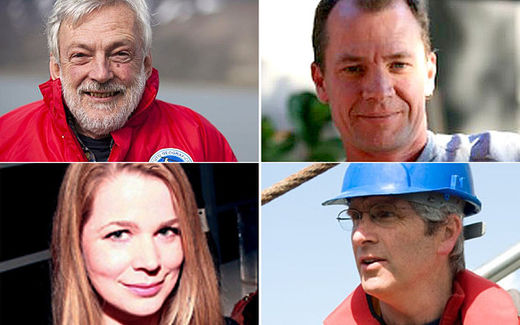
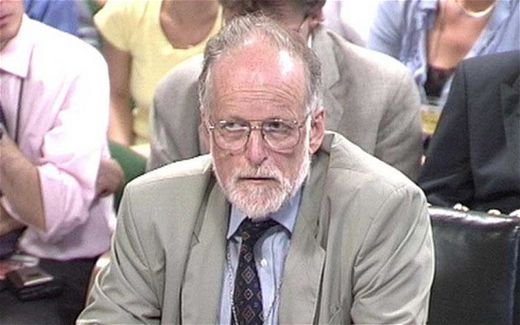

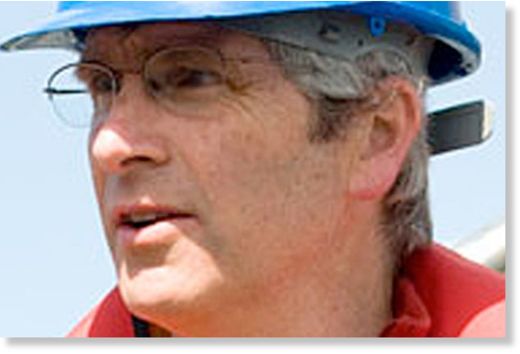
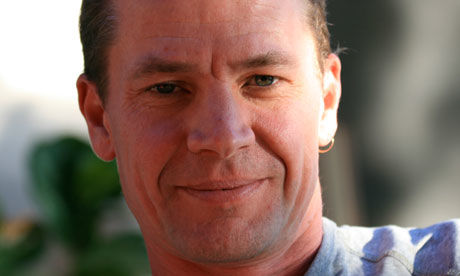
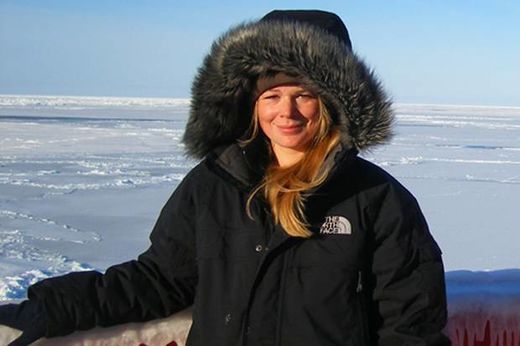
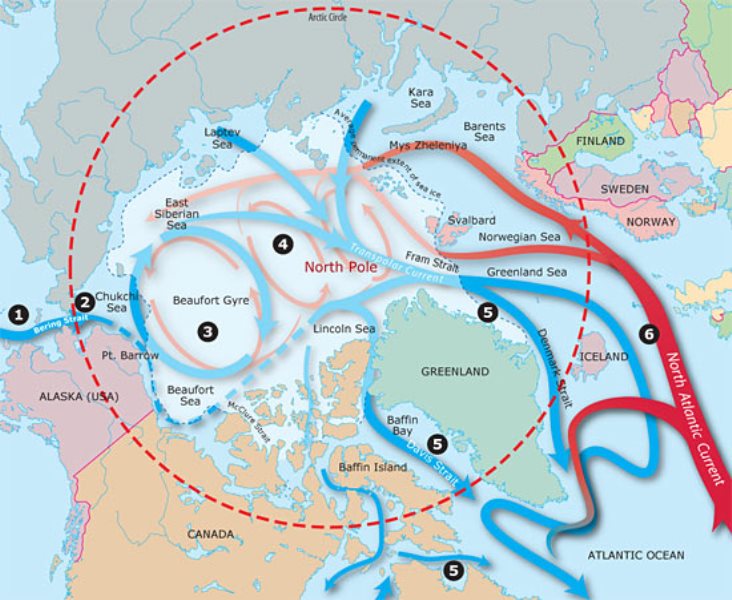



So why would a government want to kill scientists who's theories point to common people as the cause of global warming and avoid blaming corporations and governments? Well one possible reason might be that the scientists began to realize that the climate was being intentionally manipulated..? Maybe, maybe not.